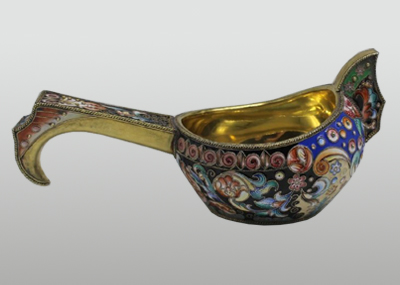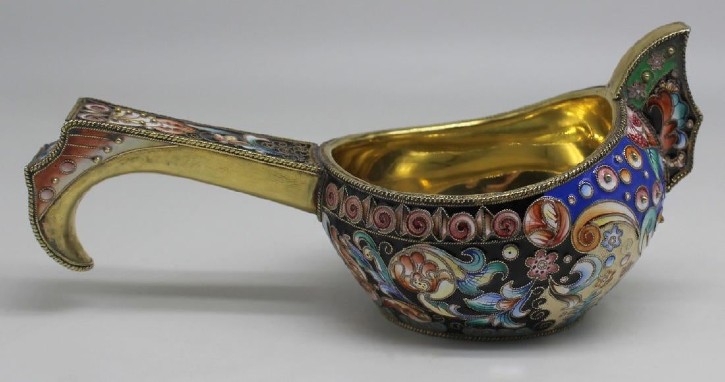
NEW YORK – If you’re unfamiliar with the kovsh, you’re either not of Russian lineage or have simply never stumbled upon the word. First things first: It’s pronounced “cove” with an “sh” tacked on at the end (the plural is kovshi). As for what it is, the kovsh is a traditional drinking vessel, or ladle, from Russia, and it’s been around for more than a thousand years. Specimens have been dug up that date as far back as the 10th century, when they were mostly made from wood or even tightly woven cloth. For centuries the kovsh was a popular, distinctive article of Old Russian tableware.
The earlier, wooden kovshi were carved to resemble a duck, goose or Norse longship, and were used to serve mead (a mildly alcoholic drink made from honey), braga (a light beer) or kvass (a brew fermented from black bread). The body of the kovsh served as the container for the liquid; the head and beak (or bow and stern) were the handles. Around the middle of the 14th century the first metal kovshi began to appear, and in the 16th century they began to be made from silver and gradually took on a more ceremonial status as the decorations became more and more elaborate.
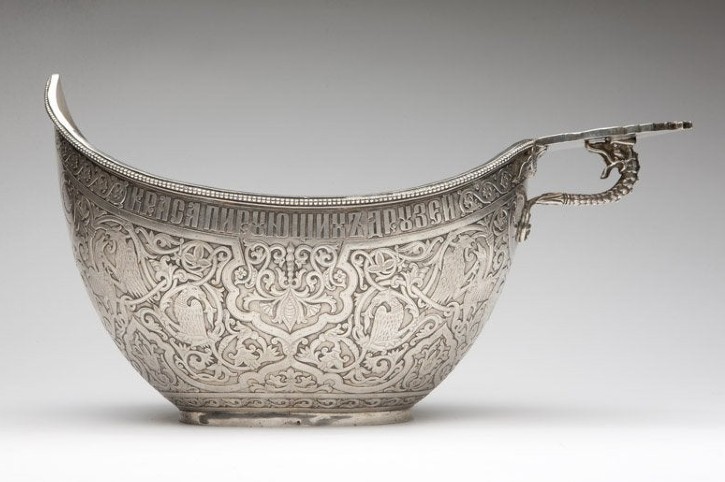
While the kovsh has traditionally been a prized piece within Russian families, it became a more widespread collectible beginning in the second half of the 19th century when, ironically, its use as a drinking vessel had pretty much come and gone. The kovshi from that period were seen in the lovely multicolored enameling that was inspired by 16th and 17th century patterns. A longing for Russian art free from Western influence helped lead to the Russian Revival period in the 1870s and 1880s. By the time of the Russian Revolution, kovshi had pretty much disappeared.
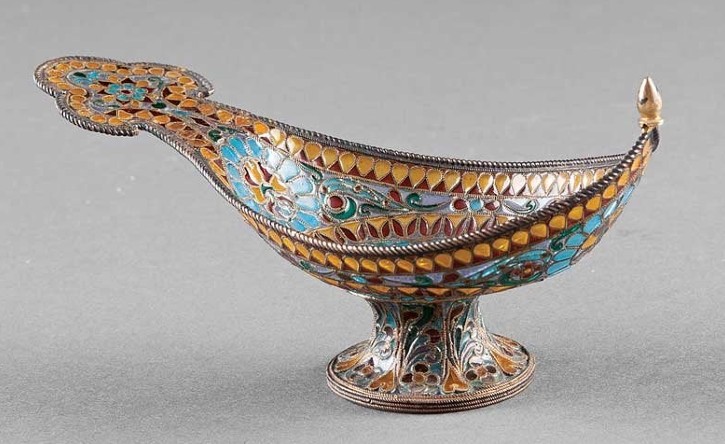
But the examples that survived the revolution (there were stories of grandmothers fleeing Russia with a kovsh and other heirlooms hidden in the hems of their skirts) have made for beautiful and historically important collectibles today, ones that routinely fetch thousands of dollars at auction. Richly decorated with cloisonné and champlevé enamel (the most important Russian craftsmen being Khlebnikov and Ovtschinnikov), they were ornate and often adorned with jewels as they were ultimately re-purposed from drinking vessel to official gifts from the czarist government.
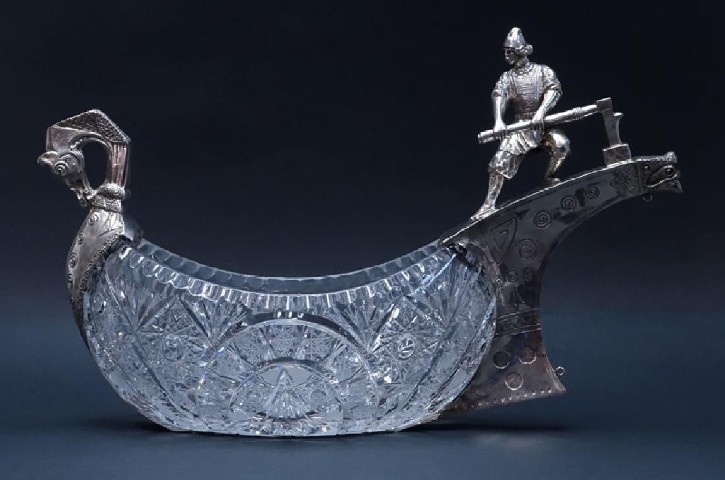
Early on, different names were devised for the various sorts of kovshi. A piti, or drinking kovshi, was given to each guest; a vynosny was a larger kovsh, meant to be shared by several guests; and the khoromnye belonged to the Imperial Court and bore an appropriate inscription. But the most important kovshi of all was the zhalovannye, or presentation kovsh. These were given as gifts by czars to loyal supporters of the empire and were popular around the 18th century. The zhalovannye was often engraved with the recipient’s name on the side.
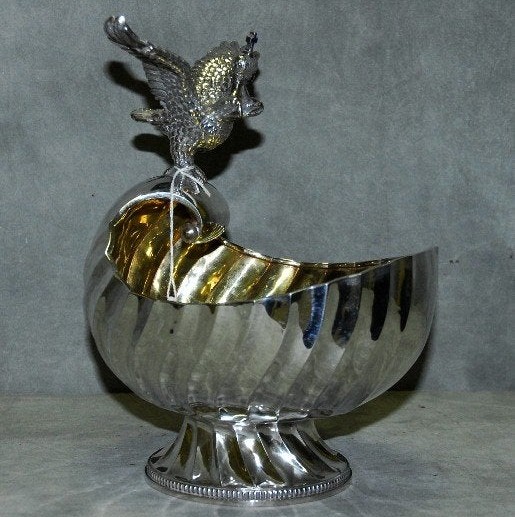
An example of a kovsh given as a gift came when Czar Peter I the Great presented a zhalovannye to Frederick Augustus I of Saxony. It was a beautifully crafted kovsh, made of gold and niello and decorated with pearls and sapphires. Such pieces naturally are the kind most coveted by collectors and fetch the highest dollars. Also sought after are examples by the aforementioned Russian silver craftsmen Khlebnikov and Ovtschinnikov, as well as Maria Semenova and even Faberge, which create colorful kovshi decorated with cloisonné technique and precious stones.
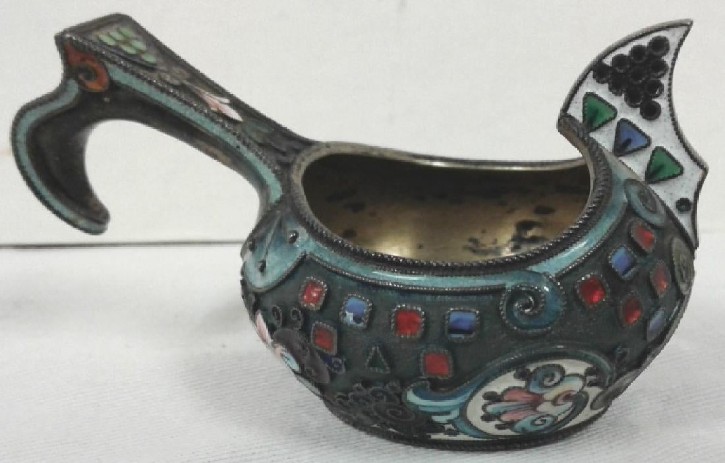
That a kovsh bears a strong resemblance to a duck is no coincidence. The avian shape was quite intentional and reflected the Russian closeness with nature. In centuries past, ducks were seen in Russian culture as a link between the earthly, the heavenly and the underground realms, since they lived on land, could fly in the sky and swam in the water (it was believed the water led them to the underworld). The boat-shape examples were so formed as a nod to Russia’s seafaring past. Both designs are sought after by collectors, who prize them for both their shape and beauty.
# # #


